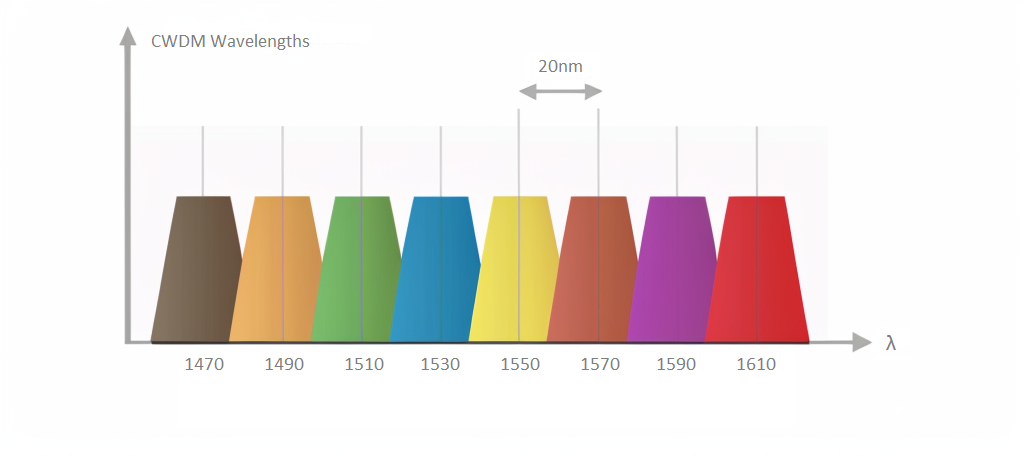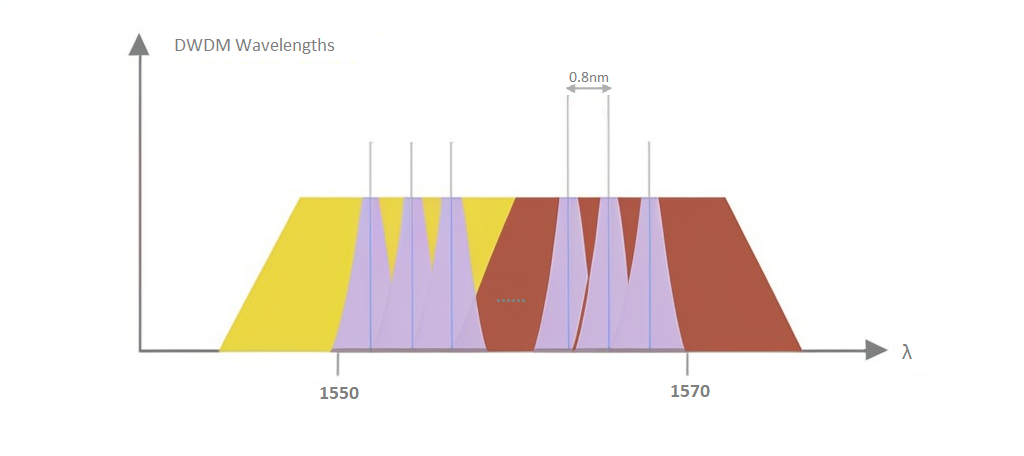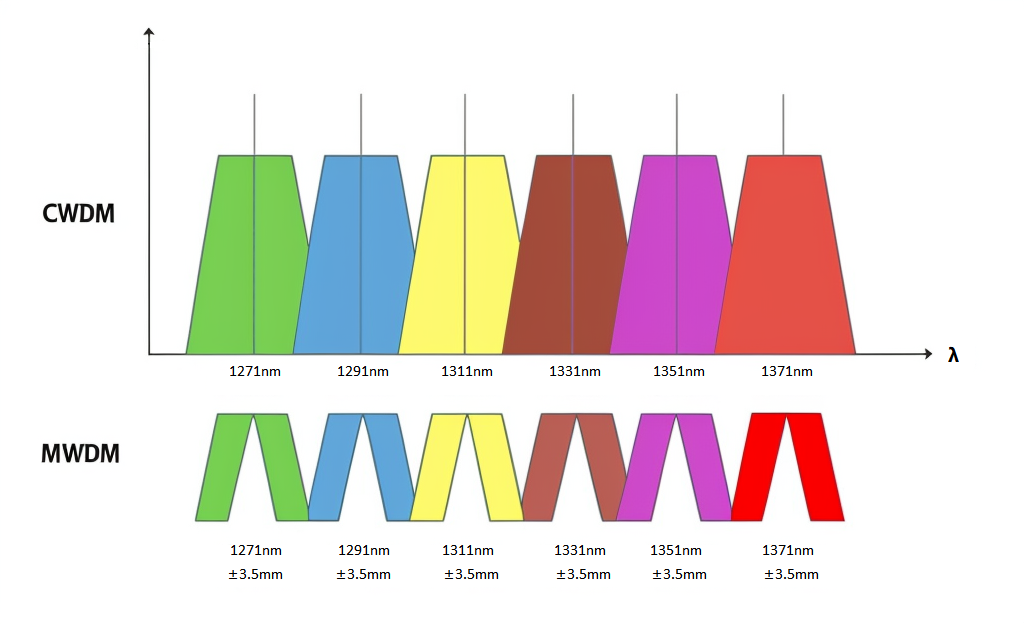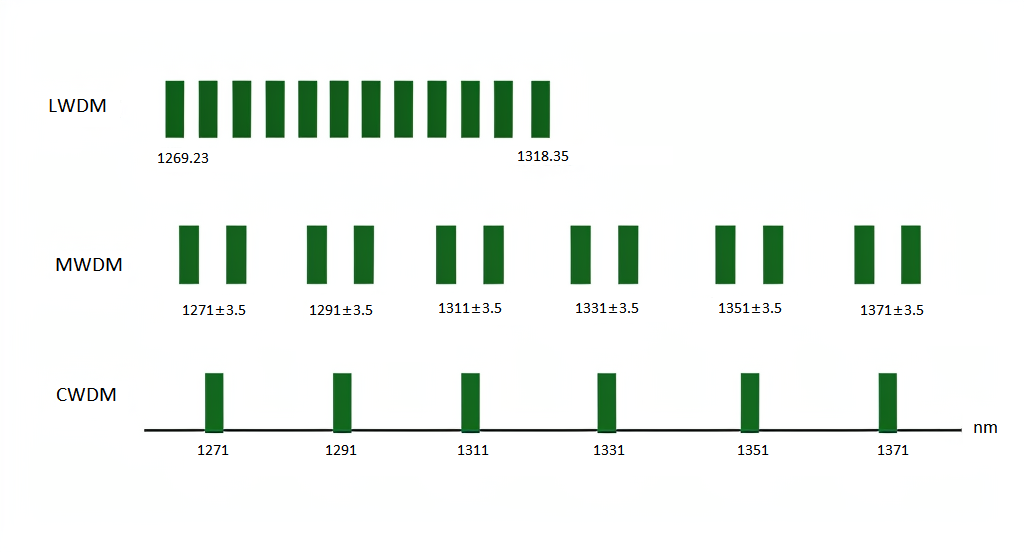CWDM, DWDM, FWDM, MWDM, or LWDM: Which Wavelength Division Multiplexing Is Your Network's Perfect Match?
2023-12-16
Optical networking has revolutionized data transmission, offering high-speed and efficient communication solutions for various industries. Among the different technologies employed in optical networking, Coarse Wavelength Division Multiplexing (CWDM), Dense Wavelength Division Multiplexing (DWDM), Filter Wavelength Division Multiplexing (FWDM), Multi-Wavelength Division Multiplexing (MWDM), and Long Wavelength Division Multiplexing (LWDM) stand out as key multiplexing techniques. Understanding their nuances and differences is crucial for network architects and operators seeking optimal solutions for their specific requirements.
Overview of Multiplexing Technologies:
CWDM (Coarse Wavelength Division Multiplexing):
Principle: CWDM uses wider spacing between channels (wavelengths) typically ranging from 1270nm to 1610nm with 20nm channel spacing.
Advantages: Cost-effective, simpler infrastructure, suitable for shorter distances (<100 km), and requiring less precise optical components.
Limitations: Lower capacity compared to DWDM due to wider channel spacing.

DWDM (Dense Wavelength Division Multiplexing):
Principle: DWDM tightly packs channels, usually between 1525nm to 1565nm, with smaller channel spacing (0.8nm or less).
Advantages: High capacity, supports longer distances (>100 km), enables transmission of multiple signals over a single fiber.
Limitations: Complex and costly infrastructure, requires precise components for narrow channel spacing.

FWDM (Filter Wavelength Division Multiplexing):
Principle: FWDM uses optical filters to separate specific wavelengths for multiplexing and demultiplexing.
Advantages: Flexibility in wavelength selection, cost-effective for certain applications, suitable for small-scale systems.
Limitations: Limited scalability, may face challenges in handling high traffic loads compared to DWDM.
MWDM (Multi-Wavelength Division Multiplexing):
Principle: MWDM combines multiple wavelengths within a broader range, often in non-contiguous bands.
Advantages: Increased capacity compared to CWDM, moderate complexity, suitable for specific bandwidth requirements.
Limitations: Limited scalability and capacity compared to DWDM, less efficient for high-density applications.

LWDM (Long Wavelength Division Multiplexing):
Principle: LWDM operates at longer wavelengths, typically beyond 1610nm.
Advantages: Reduced fiber attenuation, potential for extended reach, suitable for specialized applications like PON (Passive Optical Network).
Limitations: Limited compatibility with existing infrastructure, fewer available components, and higher costs for specialized equipment.

Selection Considerations:
Distance and Reach: For longer distances, DWDM and LWDM are preferable due to their narrower channel spacing and suitability for extended reach.
Capacity and Scalability: DWDM offers the highest capacity and scalability, making it ideal for high-bandwidth applications and future expansion.
Cost and Complexity: CWDM and FWDM are more cost-effective and simpler to implement but come with limitations in terms of capacity and scalability.
Application Specificity: MWDM and LWDM cater to specific requirements such as moderate capacity needs and specialized wavelength ranges.
Conclusion:
Each multiplexing technology, whether CWDM, DWDM, FWDM, MWDM, or LWDM, presents distinct advantages and limitations. The choice depends on factors such as distance requirements, capacity needs, scalability, and cost considerations. Network architects must carefully evaluate these technologies to select the most suitable solution tailored to their specific application and infrastructure constraints.







